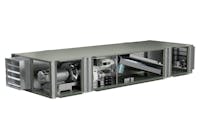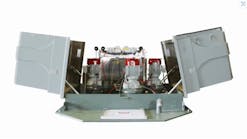All of us in the industry recognize HVAC is a major consumer of energy, and we spend a lot of time and money trying to find ways to make equipment more efficient. But HVAC equipment doesn’t just use a lot of energy; it also can use a lot of water. For example, a 300-ton cooling tower can evaporate 12 to 13 gpm and, with typical drift and bleed rates, require 18 to 19 gpm in makeup water. And that makeup usually is potable water from the local utility.
Here in Florida—especially Broward County, where I live, work, and play—we’re addressing that issue. Although Florida generally may not be regarded as an early adopter of things green, we are trying to set a good example when it comes to water conservation.
For example, a couple of years ago, the Broward County Board of Rules and Appeals established an ad-hoc recapture-of-condensate-and-water-conservation steering committee, a very hard-working group of (mostly) engineers tasked with writing amendments to the state building code in an effort to reduce HVAC-related water consumption. After several meetings and much input from water-treatment providers, cooling-tower manufacturers, and water utilities, two local amendments were adopted. When the amendments became effective June 1, 2012, Broward County immediately became a national leader in water conservation. As well it should be. Much of Florida’s fresh water comes from the Floridan aquifer, with most of the rest being supplied by the St. Johns, Suwannee, and Ocklawaha rivers, all of which are in the northern part of the state. However, the bulk of the state’s population is located in the southern part of the state. Although Florida is surrounded on three sides by water, it doesn’t have an abundance of fresh water, and the Natural Resources Defense Council has identified Florida as one of 14 states predicted to face “high-risk” water shortages by the year 2050.
One of the Broward County code amendments requires that all new and retrofit cooling towers be equipped with makeup and blowdown (bleed) meters and conductivity controllers and that they be operated at a minimum of eight cycles of concentration. In comparison, the condenser-water-treatment standard promulgated by the International Green Construction Code and the “Green Plumbing and Mechanical Code Supplement” is only five cycles of concentration, while most systems probably are operating at around three cycles of concentration.
Another local amendment provides that condensate from HVAC systems served by an on-site cooling tower be recovered and used for makeup to the tower. According to one of the engineers who served on the steering committee, the potential water savings associated with these initiatives could be as high as 7.5 million gal. per day, which would represent approximately 25 percent of the predicted shortfall by the year 2025. And the reduction in load on local municipal treatment facilities could be as much as 5.6 million gal. per day. That would represent a typical savings of around $5,000 per month for commercial buildings with water-cooled HVAC systems.
Although the eight cycles of concentration may be a bit ambitious for some locales, on-site condensate-recovery seems like a reasonable requirement for all new commercial buildings with cooling towers. Maybe this time Florida—or at least Broward County—can raise the bar for the rest of the country.








